This award winning film is a fast paced, humorous look at the colorful way the residents of New Orleans express themselves - why they talk the way they do, where the words come from, and what it means to talk with a New Orleans accent.
Related Movies

Inside Hurricane Katrina (2006)
From the creators of critically acclaimed Inside 9/11 comes another powerful journalistic account, Inside Hurricane Katrina. Go beyond the round-the-clock news coverage for a comprehensive look behind the devastation caused by nature's fury and human error. How did this happen? Can it happen again? Why weren't emergency personnel fully ready to respond to a real disaster? Using comprehensive analysis of events, hours of government audio tapes, and personal interviews, National Geographic takes viewers into the eye of Katrina to uncover the decisions and circumstances that determined the fate of the Gulf residents.

Welcome to New Orleans (NaN)
A touching documentary about a city that has lost hope, and about one man's fight to bring it back.
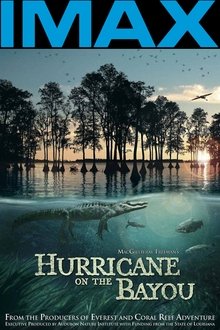
Hurricane on the Bayou (2006)
The film "Hurricane on the Bayou" is about the wetlands of Louisiana before and after Hurricane Katrina.

The Grammar of Happiness (2012)
The Grammar Of Happiness follows the story of Daniel Everett among the extraordinary 'nonconvertible' Amazonian Pirah tribe, a group of indigenous hunter- gatherers whose culture and outlook on life has taken the world of linguistics by storm. As a young ambitious missionary three decades ago, Dan, a red-bearded towering American, decamped to the Amazon rain forest to save indigenous souls. His assignment was to translate the book of Mark into the tongue of the Pirah, a people whose puzzling speech seemed unrelated to any other on Earth. What he learned during his time with the Pirah led him to question the very foundations of his own deep beliefs. As a 'born again' atheist, Dan divorced his devout Christian wife and became estranged from his children. Having lost faith and family, his new life is dominated by the desire to leave behind his legacy. Everett's most controversial claim is that the Pirah language lacks 'recursion' - the ability to build an infinite number of sentences.
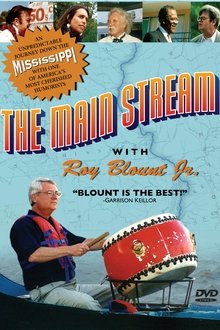
The Main Stream (2002)
Humorist Roy Blount Jr. takes viewers on a journey down the Mississippi River, showcasing everything from areas with spectacularly beautiful scenery to ugly and dangerously polluted stretches bordered by industrial development.
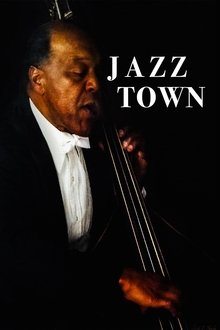
JazzTown (2021)
Denver’s iconic and Grammy Award-winning musicians reveal the secrets of their success and longevity in the music business while warning the young lions to whom they pass the torch to stay relevant in a marketplace both treacherous and brutal. The majestic Rocky Mountains tower over a bustling metropolis filled with steamy and romantic nightclubs where jazz flourishes on stage. JazzTown features never seen before live concert footage on historic stages that have now crumbled due to economic stresses of the Covid Pandemic. ~ Dianne Reeves, 5-time Grammy Award winner for Best Jazz Vocalist ~ US Senator John Hickenlooper (former jazz club owner) ~ Ron Miles (Colorado Music Hall of Fame, Joshua Redman, Bill Frisell, Ginger Baker) ~ Charlie Hunter (Snarky Puppy, Christian McBride, Stanton Moore) ~ Art Lande (Mark Isham, Gary Peacock) ~ Ayo Awosika (Session Singer on Soundtracks to: Wakanda Forever, Nope, Dune, The Lion King ... tours with Miley Cyrus,) and many more.

The Re-Up (2012)
A backstage and on-stage look at Nicki Minaj's career during the Pink Friday Tour, festivals, and more.

Do I Sound Gay? (2015)
What makes a voice “gay”? A breakup with his boyfriend sets journalist David Thorpe on a quest to unravel a linguistic mystery.

I Will Keep My Soul (2023)
I Will Keep My Soul is a gathering of encounters and observations, figured in text and image, of Helen Cammock’s experiences in New Orleans. Cammock convenes both contemporary and historical voices—from archivists, artists, writers, and musicians to the protagonists of the civil rights movement—and adds her own through poetry, ceramics, and the sound of her trumpet.

Lagniappe (2006)
A film created by Les Blank and Maureen Gosling from footage that was cut from the documentary "Always for Pleasure" (1978) about Mardi Gras in New Orleans.

Katrina Babies (2022)
A first-person account of the short-term and long-term devastation wrought by Hurricane Katrina, as told by young people who were between the ages of 3 and 19 when the levees broke.

Anything I Catch (1990)
Louisiana filmmaker, Pat Mire, teams up with veteran filmmaker and cinematographer, Charles Bush, to capture the natural drama of handfishing in this award-winning documentary. Highly visual, the film examines the thrilling regional phenomenon of Cajuns who wade in murky bayou waters to catch huge catfish and turtles by reaching into hollow logs and stumps with their bare hands. Friends and family accompany the handfisherman to the bayou banks for Cajun music, festive cooking, and storytelling, and to witness this increasingly rare tradition. Told from the inside with multiple voices, Mire and Bush explore the chain of events set off by man's attempt to "improve" his environment by dredging bayous in this remarkable study of the relationship between cultural and natural resources.

The Promised Land: A Swamp Pop Journey (2009)
Head to southern Louisiana with filmmaker Matthew Wilkinson to soak up one of the country's best-kept musical secrets: Lil' Band o' Gold, a group of seasoned musicians who churn out an eclectic blend of country, R & B and zydeco known as swamp pop. This lively documentary follows blues-rock legend C.C. Adcock as he scours the marshes and prairies of Acadiana to assemble a supergroup of diverse personalities, backgrounds and musical styles.

Murda Capital (2015)
MURDA CAPITAL documents the harsh reality of a post-Katrina New Orleans. Rapper, entrepreneur and New Orleans native K. Gates sets out into New Orleans most treacherous ghettos to discover the root of a cycle of killing. People from all factions of the city give their take on how murder has affected them directly and indirectly. Stories of a convicted murderer and a mother who lost all four sons to gun violence shivers the soul. Drugs, money, ignorance, ego, and envy make a deadly concoction which equates to the nation's highest murder rate for more than a decade. See how violence intertwines with the cities rich culture. Obtain access to the part of New Orleans hidden from tourist as K. Gates strives to 'Save The City'.

Hot Pepper (1973)
A musical portrait of Zydeco King Clifton Chenier, who combines the pulsating rhythms of Cajun dance music and black R&B with African overtones, belting out his irresistible music in the sweaty juke joints of South Louisiana.
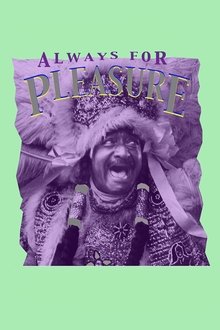
Always for Pleasure (1978)
An intense insider's portrait of New Orleans' street celebrations and unique cultural gumbo: Second-line parades, Mardi Gras, Jazz Fest. Features live music from Professor Longhair, the Wild Tchoupitoulas, the Neville Brothers and more. This glorious, soul-satisfying film is among Blank's special masterworks. Preserved by the Academy Film Archive in 1999.
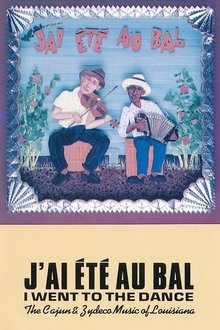
I Went to the Dance (1989)
The definitive film on the history of the toe-tapping, foot-stomping music of French Southwest Louisiana. Includes many Cajun and Zydeco greats, featuring Michael Doucet and Beausoleil, Clifton Chenier, Marc and Ann Savoy, D.L. Menard, and many others.

John Kennedy Toole: The Omega Point (2009)
The life story of Pulitzer Prize winning author John Kennedy Toole as told by friends and colleagues. Legacy format production, representational photography and an original music score combine to bring the author's life into focus. His personal triumphs, his untimely death and the publication of the novel, 'A Confederacy of Dunces,' years after his suicide are all explored in this darkly beautiful first person narrative.

Saving Pelican 895 (2011)
HBO Documentary Films Presents the story of the effort to save the 895th surviving oiled pelican in Louisiana, showing how conservationists, government agencies and wildlife activists joined forces to preserve this one life.

New Orleans That Was (2022)
A ride on the Zephyr at Pontchartrain Beach, a ride on the Canal Street streetcar, a journey along the New Basin Canal, exploring Lincoln Beach, watching the New Orleans Pelicans play ball, seeing the Mardi Gras Indians on tree-lined North Claiborne Avenue or just going to the neighborhood movie theatres. Visit some of the special places from New Orleans’ recent past.